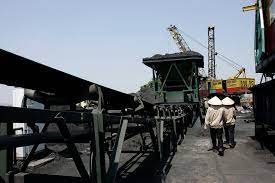The energy sector, being a significant source of greenhouse gases, has been central to discussions on climate change mitigation. Transitioning from carbon-intensive fossil fuels to green energy is critical. A particular focus has been on shifting away from coal, especially since the G7 countries and China’s joint commitment in 2021 to cease funding new coal plants abroad.
This commitment has ignited discussions about accelerating the phase-down of existing coal plants. Initiatives like the Asian Development Bank’s Energy Transition Mechanism and the Glasgow Financial Alliance for Net Zero (GFANZ) have aimed to expedite the retirement or repurposing of fossil fuel plants, particularly coal-fired power plants, in the Asia-Pacific region.
However, a key question is how early retirement of coal plants affects their owners and investors. Governments, companies, and financial institutions invest in coal plants with the aim of turning a profit over the duration of a power purchasing agreement (PPA), usually around 25 years, or even until the plant’s technical lifetime, typically about 40 years. Shortening a plant’s operational lifespan might lead investors to resist early retirement through legal action and lobbying.
Contrary to conventional expectations, our joint study by the Green Finance & Development Center at FISF Fudan University in Shanghai and Climate Smart Ventures in Singapore found that investors could benefit from early retirement of coal plants, which could encourage them to support such initiatives.
The study focused on the company value of six coal-fired power plants in Pakistan and Vietnam, constructed with Chinese investment. We selected plants using less efficient technologies to maximize potential carbon emission reductions by their early retirement. Additionally, we examined plants with less than 1GW generation capacity to simulate a realistic transition scenario without compromising national energy supplies.
Deep analysis of specific PPAs, financial performance, and power sector reports provided a factual foundation for our models. Three different future scenarios were developed: a ‘business-as-usual’ scenario prioritizing energy security, an ‘Allies’ scenario where regional blocs prioritize economic and political interests, and a ‘Future’ scenario where the global economy prioritizes renewable energy and climate action.
We then applied two financing scenarios to evaluate coal plants’ enterprise values: asset refinancing, where the coal plant raises refinancing to retire the plant early, and refinancing bundled with renewable energy investment, where the coal plant retires at the end of the loan term and renewables commence operation.
The results were promising. Our modeling showed an increase in enterprise value for all six plants under all scenarios. In Pakistan, refinancing could allow the retirement of three plants seven to nine years ahead of schedule while generating a profit.
In Vietnam, the avoided lifetime emissions were significant, particularly for the Thang Long and Hai Phong 2 plants. For all six plants, bundling refinancing with renewable energy investments tripled enterprise values, even in a ‘business-as-usual’ scenario.
These findings are significant. If investors can achieve higher returns by phasing down coal plants early and further improve returns by combining coal plant retirement with renewable energy investments, accelerated phase-down becomes a triple-win opportunity: investors benefit, local communities benefit through cleaner air and new infrastructure, and the global climate benefits from lower emissions.
To realize this in practice, negotiations and detailed planning are essential. Local governments, investors, and planners must collaborate to renegotiate existing PPAs and contracts for coal plants and prepare for renewable energy expansion. New investors willing to provide refinancing at a lower cost need to be identified, possibly through mechanisms like credit enhancement and exchange rate hedging.
Additionally, ensuring the credibility of retirement plans requires close cooperation with trusted international partners like GFANZ or the Coal Asset Transition Accelerator (CATA). China’s role is pivotal, given its engagement in coal plants in South and Southeast Asia and its commitment to ‘green’ the Belt and Road Initiative.
Early coal retirement can be successful if local policymakers align risk and return calculations with green transition goals. With the right approach, we could witness a rapid transformation of the energy landscape, benefiting investors, communities, and the global climate.
About the Authors:
- Prof. Christoph Nedopil is the Director of the Griffith Asia Institute at Griffith University, Brisbane, and acting director of the Green Finance & Development Center at FISF Fudan University, Shanghai. His work covers green finance and sustainable development in Asia and China’s Belt and Road Initiative.
- Lawrence Ang is the Managing Partner of Climate Smart Ventures (CSV). He is an energy finance and ESG advisor with a focus on Asia.
- Matthew Carpio is the Head of Transaction Advisory at Climate Smart Ventures. He is a finance professional with a background in corporate finance and investment banking.
This article originally appeared on The Third Pole and has been reproduced with permission.



